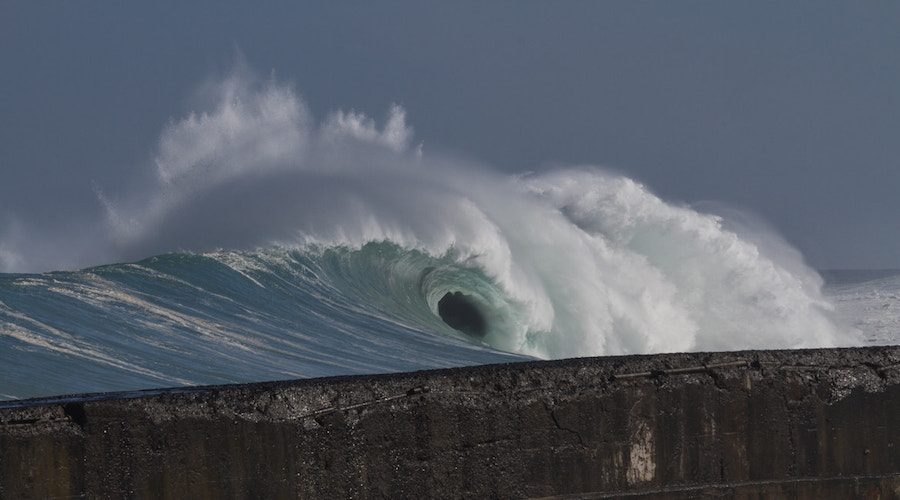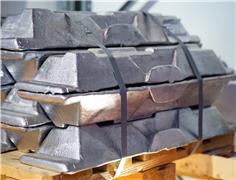- Write by:
-
Monday, February 6, 2023 - 19:36:02
-
274 Visit
-
Print

Mining News Pro - Researchers at the US’ Pacific Northwest National Laboratory are working on the development of a new cylindrical triboelectric nanogenerator (TENG)—a small powerhouse that converts wave energy into electricity to power devices at sea.
The goal behind the new device is to permanently keep the charge of sensors used to monitor tsunamis, hurricanes, and maritime weather, as changing those batteries when they run out requires significant effort and resources.
Larger versions of this generator could also be used to power ocean observation and communications systems, including acoustic and satellite telemetry.
“TENGs are low cost, lightweight, and can efficiently convert slow, uniform or random waves into power—making them particularly well-suited to powering devices in the open ocean where monitoring and access are challenging and costly,” said Daniel Deng, a PNNL laboratory fellow and co-developer of the new device.
Deng and his team took a novel approach to advance cylindrical TENGs for use on the open ocean. Their patent-pending frequency-multiplied cylindrical triboelectric nanogenerator (FMC-TENG) uses carefully placed magnets to convert energy more efficiently than other cylindrical TENGs and better transform slow, uniform waves into electricity.
So far, the prototype FMC-TENG has been able to produce enough electricity to power an acoustic transmitter—a type of sensor often included on ocean observing platforms that can be used for communications. This is about the same amount of electricity it takes to power an LED lightbulb.
“We’re developing the FMC-TENG to power everything from ocean observing platforms with multiple sensors to satellite communications, all using the power of the ocean,” Deng said.
How it works
The triboelectric effect—the same effect researchers leverage in the FMC-TENG to produce power – is similar to what people experience when shocked by static electricity. A cylindrical TENG is made up of two nested cylinders with the inner cylinder rotating freely.
Between the two cylinders are strips of artificial fur, aluminum electrodes, and a material similar to Teflon called fluorinated ethylene propylene (FEP). As the TENG rolls along the surface of an ocean wave, the artificial fur and aluminum electrodes on one cylinder rub against the FEP material on the other cylinder, creating static electricity that can be converted into power.
The more a cylindrical TENG moves, the more energy it generates. That’s why fast, frequent waves can generate more energy than the slower, more uniform waves of the open ocean.
To come up with a TENG that could power electronics in the open ocean, Deng and his colleagues set out to increase the amount of wave energy converted into electricity in the FMC-TENG. Turns out, the key was to temporarily stop the FMC-TENG’s inner cylinder from moving.
In the FMC-TENG, the team positioned magnets to stop the inner cylinder in the device from rotating until it reached the crest of a wave, allowing it to build up more and more potential energy. Nearing the crest of the wave, the magnets release and the internal cylinder starts rolling down the wave very quickly. The faster movement produces electricity more efficiently, generating more energy from a slower wave.
A wave energy converter for the open ocean
Currently, the FMC-TENG prototype can produce enough power to run small electronics, like temperature sensors and acoustic transmitters.
As the team iterates on their design for commercial use, the FMC-TENG is expected to produce enough power to run an entire open ocean monitoring platform comprised of multiple sensors and satellite communications. In addition to this, the FMC-TENG is lightweight and can be used in both free-floating devices and moored platforms.
Short Link:
https://www.miningnews.ir/En/News/622652

A Native American group has asked all members of a US appeals court on Monday to overturn an earlier ruling that granted ...

The London Metal Exchange (LME) on Saturday banned from its system Russian metal produced on or after April 13 to comply ...

The world’s coal-fired power capacity grew 2% last year, its highest annual increase since 2016, driven by new builds in ...

Peabody Energy Corp. shares sunk to the lowest in seven months after the biggest US coal miner warned that first-quarter ...

Polish government is abandoning plans to separate coal-fired power plants into a special company and is considering ...

BMO Bank quietly dropped its policy restricting lending to the coal industry in late 2023, helping it avoid being ...

Vietnam’s top miner Vinacomin plans to invest 182 trillion dong ($7.3 billion) to ramp up its alumina-aluminum ...

Rare earths prices in top producer China jumped to their highest in more than seven weeks on Monday on a wave of ...

Researchers at the University of Edinburgh discovered that bacteria found in areas polluted by acid mine drainage had ...
No comments have been posted yet ...